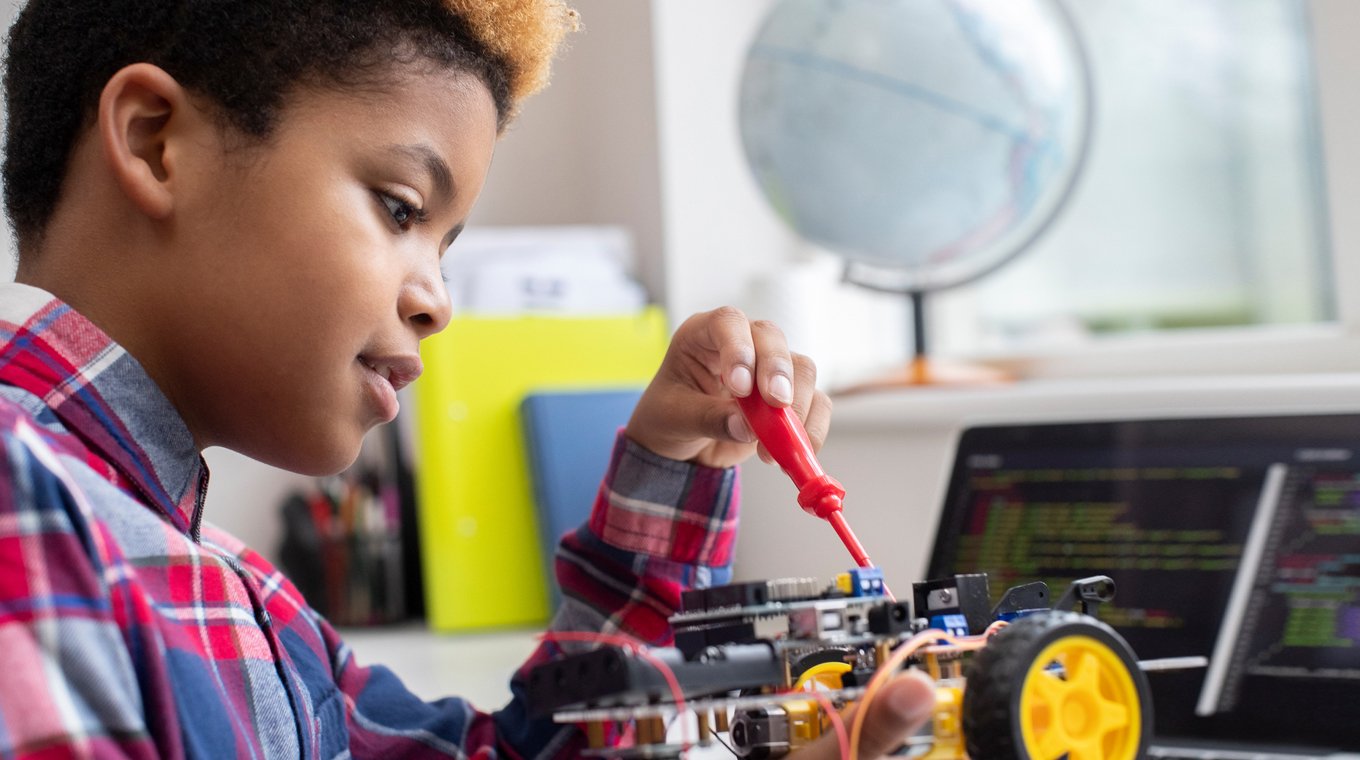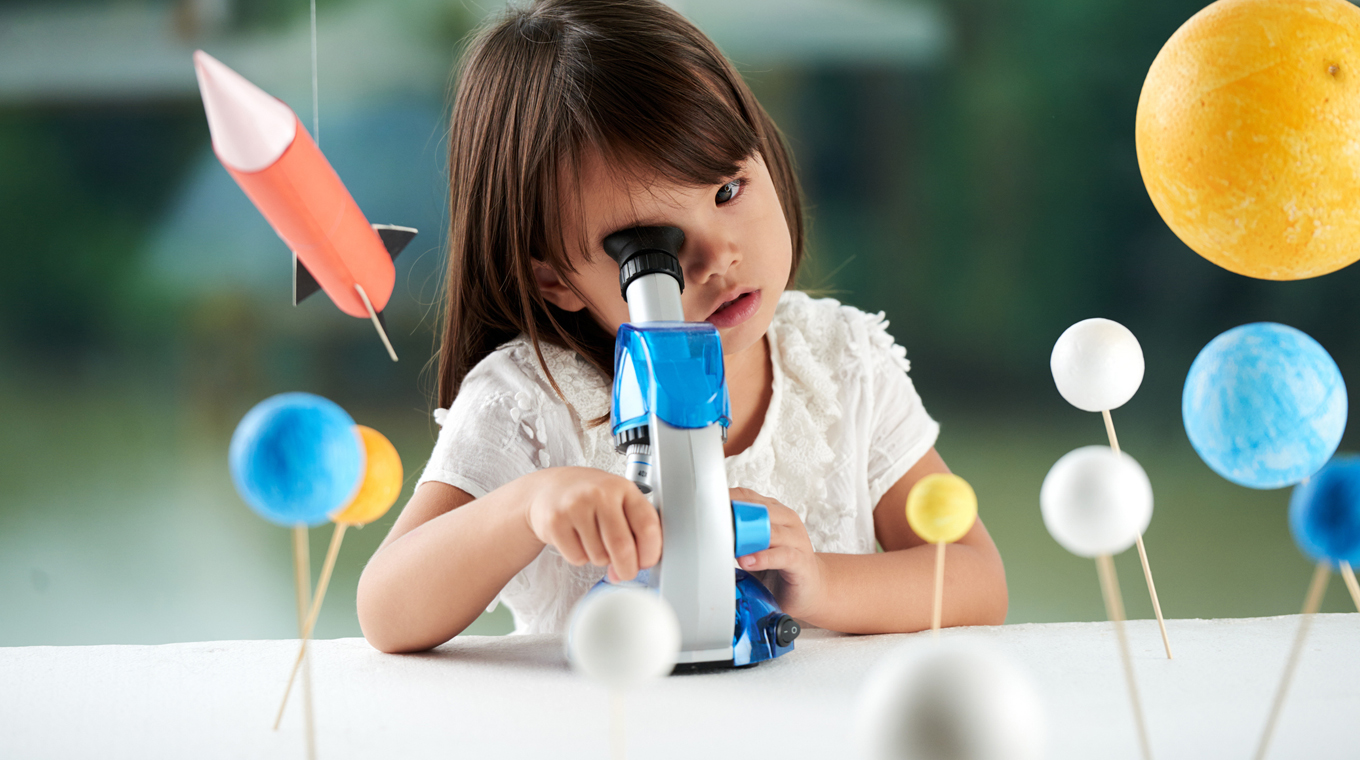
IN THIS ARTICLE
Seeing the world how our children see it is something to be enjoyed. For them, everything is new and unexplored, and so they try it all. Inherently, our children are adventurists, behaviorists, scientists, and the list goes on.
STEAM — the acronym for science, technology, engineering, art, and mathematics — fosters that kind of discovery learning. STEAM project-based learning encourages our kids to ask questions, try things out, and then see what the results are.
The practical and unique inventions that our kids can create are the sources of inspiration that we all need. Check out the amazing innovations that kids have come up with that show off their ability to make humanity better.
What is STEAM education and why is it important?

STEAM education always begins with your child asking a question, such as “What is an ecosystem?” Thereafter, the process of exploration begins. Your child begins to piece together their ecosystem — a plastic jar is chosen and sand, dirt, and seeds are gathered. All the while, your child is deciding what the environment needs to help it grow.
No matter success or failure, your child has learned how to build an ecosystem, has begun learning about the importance of nature, and will develop crucial problem-solving skills. The beauty of STEAM education is that it fosters inquiry and problem-solving – two areas that can save our world.
John Maeda, president of the Rhode Island School of Design, applauded what STEAM is able to do. “There is creativity in STEM itself, super genius in it … but in arts education, it really is the raison d’etre to be out of the box, to accept the chaos,” Maeda told Education Week.
Meet the young STEAM innovators who are inspiring their peers

Covering all the STEAM subjects — science, technology, engineering, art, and mathematics — there are young people across the country and the world producing inventions. They are inspiring their peers to do the same, and they are inspiring us to be better.
Maya Penn (Engineering and Art )
Fashionista Maya Penn has been proudly producing sustainable fashion from the age of 16. On top of that, she has shared her success in several TED Talks and has published a book teaching others to become creatives.
Param Jaggi (Science, Technology, Engineering, and Mathematics)
Param Jaggi invented a device that will possibly change the course of our air quality. His invention converts the carbon dioxide that is emitted from a car into oxygen.
Alissa Chavez (Science, Technology, Engineering, Art, and Mathematics)
At age 14, Alissa Chavez invented the “Hot Seat,” an alert system that lets parents know when their baby’s car seat is too hot.
Colin, Ryan, and Austin Gill (Science and Art)
These brothers began a candle business as a way to increase their allowance. After learning about candle—making from their mother, they began to make and sell their candles. During this holiday season, their products are selling out fast.
Raymond Wang (Science, Technology, Engineering, and Mathematics)
Winner of the 2015 Intel International Science and Engineering Fair (ISEF), Raymond Wang invented a device that helps circulate air in an airplane to reduce germs – a device desperately needed these days.
Xóchitl Guadalupe Cruz López (Science, Technology, Engineering, and Mathematics)
Xochitl Guadalupe Cruz Lopez created a solar-paneled water heater so that her family and those living in the city she grew up in would not suffer from a lack of hot water.
Cory Nieves (Science and Art)
Wanting to support his mother and buy her a car, Cory Nieves began making and selling hot cocoa. His dedication offered him new opportunities and, at the young age of 6, he began baking and selling what has been deemed the perfect chocolate chip cookie.
Mark Bao (Science, Technology, Engineering, Art, and Mathematics)
Mark Bao developed three different tech-based companies as a teen. As a technology entrepreneur, he is now a consultant and has been focusing on his philanthropy.
STEAM learning can give your young scientists a head start, too

Parents, we know our children have imaginations beyond our own. STEAM education encourages them to keep imagining. Keep in mind that STEAM learning can start at a very early age.
An article from the European Journal of STEM Education emphasized the impact of teaching STEAM to preschool children. “Preschool children have a natural disposition toward science with their sense of creativity, curiosity, and persistence.”
And to further encourage us to teach our younger ones STEAM concepts, mother of three Melissa — who has a Ph.D. in STEM — stressed the importance of seizing the opportunity to cultivate our little ones' curiosity. “Our children come into this world as little scientists," she previously told Mom.com. "They want to understand how things work…. Set up situations where they can pour things, twist things, drop things, taste things.”




